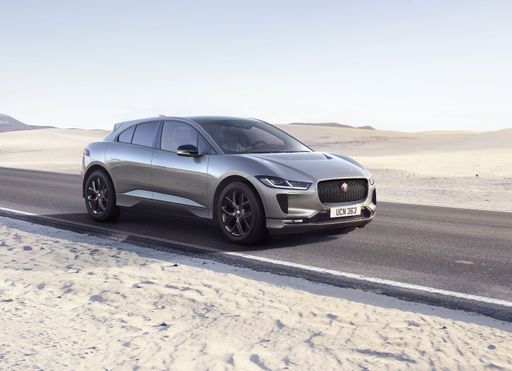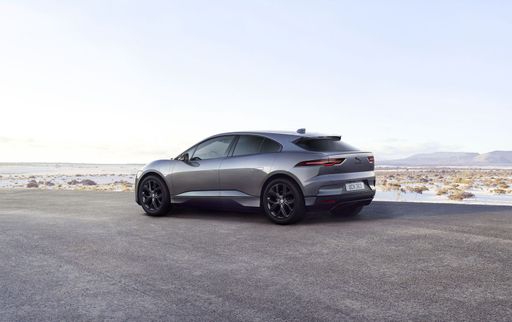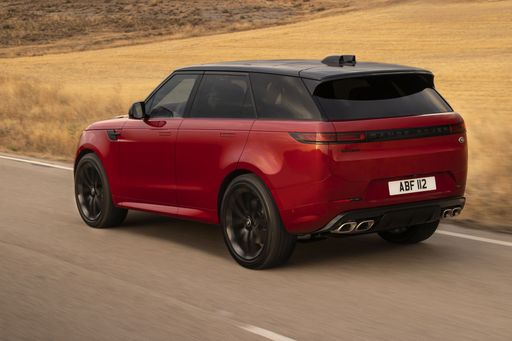Jaguar I-Pace vs Land Rover Range Rover Sport – Differences & prices compared
Two cars, one duel: Jaguar I-Pace meets Land Rover Range Rover Sport.
Which one wins in performance, efficiency and value for money? Find out now!
Costs and Efficiency:
Price and efficiency are key factors when choosing a car – and this is often where the real differences emerge.
Land Rover Range Rover Sport has a minimal advantage in terms of price – it starts at 78600 £, while the Jaguar I-Pace costs 79200 £. That’s a price difference of around 600 £.
As for range, the Jaguar I-Pace performs decisively better – achieving up to 469 km, about 351 km more than the Land Rover Range Rover Sport.
Engine and Performance:
Power, torque and acceleration are the classic benchmarks for car enthusiasts – and here, some clear differences start to show.
When it comes to engine power, the Land Rover Range Rover Sport has a noticeable edge – offering 635 HP compared to 400 HP. That’s roughly 235 HP more horsepower.
In acceleration from 0 to 100 km/h, the Land Rover Range Rover Sport is clearly perceptible quicker – completing the sprint in 3.80 s, while the Jaguar I-Pace takes 4.80 s. That’s about 1 s faster.
In terms of top speed, the Land Rover Range Rover Sport performs noticeable better – reaching 290 km/h, while the Jaguar I-Pace tops out at 200 km/h. The difference is around 90 km/h.
There’s also a difference in torque: Land Rover Range Rover Sport pulls somewhat stronger with 800 Nm compared to 696 Nm. That’s about 104 Nm difference.
Space and Everyday Use:
Whether family car or daily driver – which one offers more room, flexibility and comfort?
Both vehicles offer seating for 5 people.
In curb weight, Jaguar I-Pace is barely noticeable lighter – 2226 kg compared to 2390 kg. The difference is around 164 kg.
In terms of boot space, the Land Rover Range Rover Sport offers hardly perceptible more room – 647 L compared to 638 L. That’s a difference of about 9 L.
In maximum load capacity, the Land Rover Range Rover Sport performs hardly perceptible better – up to 1491 L, which is about 38 L more than the Jaguar I-Pace.
When it comes to payload, Land Rover Range Rover Sport significantly takes the win – 830 kg compared to 444 kg. That’s a difference of about 386 kg.
Who comes out on top?
Overall, the Land Rover Range Rover Sport shows itself to be secures victory with a clear margin and secures the title of DriveDuel Champion.
It convinces with the more balanced overall package and proves to be the more versatile choice for everyday use.
 @ Jaguar Land Rover Media
@ Jaguar Land Rover Media
Land Rover Range Rover Sport
Jaguar I-Pace
The Jaguar I-Pace represents a remarkable fusion of cutting-edge electric performance and iconic British luxury. With its sleek design and spacious interior, this model redefines what one can expect from an electric vehicle in terms of style and comfort. Its impressive driving dynamics and advanced technology make it a standout choice for those looking to make a statement on the road.
details @ Jaguar Land Rover Media
@ Jaguar Land Rover Media
 @ Jaguar Land Rover Media
@ Jaguar Land Rover Media
 @ Jaguar Land Rover Media
@ Jaguar Land Rover Media
Land Rover Range Rover Sport
The Land Rover Range Rover Sport exudes a commanding presence, combining luxury with exceptional off-road capabilities. Its sleek, modern design is complemented by a meticulously crafted interior that offers both comfort and advanced technology. With its powerful performance and refined handling, this vehicle is ideal for both urban environments and adventurous terrains.
details @ Jaguar Land Rover Media
@ Jaguar Land Rover Media
 @ Jaguar Land Rover Media
@ Jaguar Land Rover Media
 @ Jaguar Land Rover Media
@ Jaguar Land Rover Media
 @ Jaguar Land Rover Media
@ Jaguar Land Rover Media
|
 @ Jaguar Land Rover Media
@ Jaguar Land Rover Media
|
|
|
|
Costs and Consumption |
|
|---|---|
|
Price
79200 - 85500 £
|
Price
78600 - 175700 £
|
|
Consumption L/100km
-
|
Consumption L/100km
2.7 - 11.7 L
|
|
Consumption kWh/100km
25.20 kWh
|
Consumption kWh/100km
-
|
|
Electric Range
469 km
|
Electric Range
116 - 118 km
|
|
Battery Capacity
84.70 kWh
|
Battery Capacity
31.80 kWh
|
|
co2
0 g/km
|
co2
61 - 266 g/km
|
|
Fuel tank capacity
-
|
Fuel tank capacity
71 - 90 L
|
Dimensions and Body |
|
|---|---|
|
Body Type
SUV
|
Body Type
SUV
|
|
Seats
5
|
Seats
5
|
|
Doors
5
|
Doors
5
|
|
Curb weight
2226 kg
|
Curb weight
2390 - 2810 kg
|
|
Trunk capacity
638 L
|
Trunk capacity
647 L
|
|
Length
4682 mm
|
Length
4946 - 4970 mm
|
|
Width
2011 mm
|
Width
2043 mm
|
|
Height
1566 mm
|
Height
1814 - 1820 mm
|
|
Max trunk capacity
1453 L
|
Max trunk capacity
1491 L
|
|
Payload
444 kg
|
Payload
640 - 830 kg
|
Engine and Performance |
|
|---|---|
|
Engine Type
Electric
|
Engine Type
Plugin Hybrid, Petrol MHEV, Diesel MHEV
|
|
Transmission
Automatic
|
Transmission
Automatic
|
|
Transmission Detail
Reduction Gearbox
|
Transmission Detail
Automatic Gearbox
|
|
Drive Type
All-Wheel Drive
|
Drive Type
All-Wheel Drive
|
|
Power HP
400 HP
|
Power HP
249 - 635 HP
|
|
Acceleration 0-100km/h
4.80 s
|
Acceleration 0-100km/h
3.8 - 7.7 s
|
|
Max Speed
200 km/h
|
Max Speed
206 - 290 km/h
|
|
Torque
696 Nm
|
Torque
570 - 800 Nm
|
|
Number of Cylinders
-
|
Number of Cylinders
6 - 8
|
|
Power kW
294 kW
|
Power kW
183 - 467 kW
|
|
Engine capacity
-
|
Engine capacity
2997 - 4395 cm3
|
General |
|
|---|---|
|
Model Year
2023
|
Model Year
2025
|
|
CO2 Efficiency Class
A
|
CO2 Efficiency Class
B, G
|
|
Brand
Jaguar
|
Brand
Land Rover
|
What drivetrain options does the Jaguar I-Pace have?
Available configurations include All-Wheel Drive.
The prices and data displayed are estimates based on German list prices and may vary by country. This information is not legally binding.
